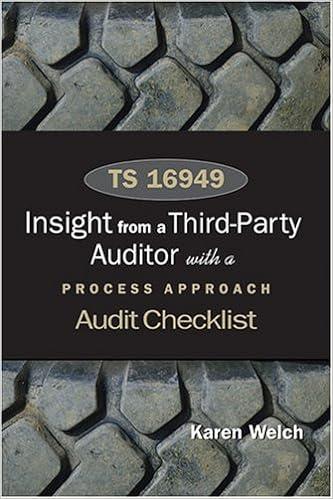Question
Given the finance department's forecast of a 20% increase in sales, how much more will SG have to invest in inventory to deal with the
- Given the finance department's forecast of a 20% increase in sales, how much more will SG have to invest in inventory to deal with the increase if nothing changes in its inventory management policies? Assume COGS (Cost of goods sold) increases by 20% and Months of inventory remain constant. (Hint: refer to the solved inventory problems document for additional examples)
Using information in Exhibit 1, fill in the table below and calculate the increase in the value of the average inventory to meet the sales forecast. (0.5 point)
|
| 2009 | 2010 |
| Net Sales | 86.3 | 103.56 |
| COGS | 38.9 | 46.68 |
| Months of Inventory | 2.690 | 2.690 |
| Value of the Average Inventory ($) | 6.8 | 9.582 |
2. (Irrespective of your answer in question 1) Suppose the total value of 2010 inventory is $10 million and the increase in value of inventory required by Scientific Glass is $1.5 million.
Gregory and Hayes suggest four policy changes to reduce the value of the average inventory. For each suggested change below, estimate the savings that can be expected if the change is successfully implemented and discuss if the estimated savings can compensate for the increase of $1.5 million.
a. It is estimated that for 10% of all products, Scientific Glass maintains too high of a service level. Assuming this high service level is 99.9% suppose the company enforces a strict 99% service level.
i. Using data from the case and Exhibit 3, complete the table below. (Hint: Refer to the solved
inventory problems document for additional examples) (2 points)
| Product | Griffin Beaker | Erlenmeyer Flask | ||
| Service Level | 99% | 99.9% | 99% | 99.9% |
| Z-Value | 2.33 | 3.09 | 2.33 | 3.09 |
| Average Weekly Demand | ||||
| Stdev of Weekly Demand | ||||
| POU (weeks) | ||||
| Q | ||||
| Average Pipeline Inventory | ||||
| Begin on hand | ||||
| SS | ||||
| Average On-Hand | ||||
| Average Inventory |
ii. Calculate the percentage saved in the average Inventory by lowering the service level from 99.9% to 99% for each product. (0.5 points)
iii. Estimate the total inventory savings by taking a simple average of savings for the two representative products and applying this average to the 10% of products. Assume that 10% of products account for 10% of the 2010 inventory value of $10 million. (0.5 points)
iv. Comment if the calculated savings compensate for the estimated $1.5 million increase in inventory. (0.5 points)
b. Elimination of Trunk Stock. Assume that the number of salespeople remains constant at 32, and all the salespeople currently maintain the maximum allowable trunk stock. Estimate the savings obtained by eliminating the trunk stock and comment if the calculated savings compensate for the estimated $1.5 million increase in inventory. (0.5 point)
c. Creation of daily/weekly inventory reports. Discuss the amount of savings that can be obtained (a qualitative answer is sufficient). Would this be sufficient to overcome the expected $1.5 million inventory increase? (0.5 point)
d. Periodic physical audits. Estimate the maximum potential savings that can be obtained (a qualitative answer is sufficient, but it is possible to come up with a quantitative estimate using information in the case). Would this be sufficient to overcome the expected $1.5 million inventory increase? (0.5 point)
Exhibit 3 Data -
| Exhibit 3: Information on Representative Products | ||
| Griffin 500ml Beaker | Erlenmeyer 500ml Flask | |
| 2009 units sold | 11,268 | 3,389 |
| Percent of all units sold | 0.1% | 0.03% |
| Annual carrying cost (%) | 14% | 14% |
| Unit price | $ 8.80 | $ 9.50 |
| Unit cost | $ 3.96 | $ 4.56 |
| Cost of underage | $ 0.48 | $ 0.49 |
| Cost of overage | $ 0.021 | $ 0.025 |
| Optimal service level | 95.8% | 95.3% |
| Average bi-weekly demand (8 warehouses) | 54.2 | 16.3 |
| Standard deviation of bi-weekly demand (8 warehouses) | 21.4 | 10.9 |
| Average bi-weekly demand (2 warehouses) | 216.7 | 65.2 |
| Standard deviation of bi-weekly demand (2 warehouses) | 38.3 | 19.5 |
| Average bi-weekly demand (1 warehouse) | 433.4 | 130.3 |
| Standard deviation of bi-weekly demand (1 warehouse) | 51.0 | 26.0 |
Step by Step Solution
There are 3 Steps involved in it
Step: 1

Get Instant Access to Expert-Tailored Solutions
See step-by-step solutions with expert insights and AI powered tools for academic success
Step: 2

Step: 3

Ace Your Homework with AI
Get the answers you need in no time with our AI-driven, step-by-step assistance
Get Started


